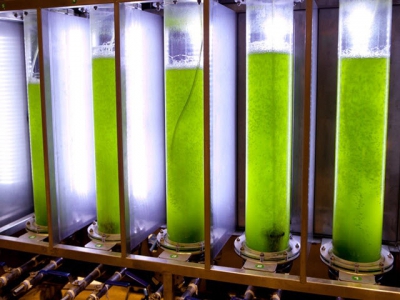Fish
US: microalgae co-product may have role in cutting fishmeal use
Microalgae coproducts may provide an inexpensive partial replacement ingredient for fishmeal in farmed tilapia, says researcher.
- Marine aquaculture with copper alloy nets
- Nutritional programming may support farmed perch growth, fishmeal replacement
- Zinc oxide nano particles with β-glucan proteins may boost fish growth, survival
- Can IoT tool help fish farmers sleep better at night?
- Novel tilapia production and feeding system in Brazil
- EFSA reviews environmental risk from hiking levels of vitamin D3 in fish feed
- US RAS organization calls for feed research, alternatives to ocean-based fish farming
- Insect meal, oil show potential for partial fishmeal, oil replacement
Fish

Algae meals may support growth, body condition in carnivorous fish
Swapping algae meal for portions of fishmeal, fish oil and plant proteins may provide similar growth performance and body condition in carnivorous fish

Managing Cage Culture Systems
Fish may be produced at high density in cages suspended in private ponds or in State waters. Most aquaculture species can be produced in cages

Channel Catfish Virus Disease
Channel catfish virus disease (CCVD) was first recognized as a disease problem during the early days of commercial catfish farming

Nitrite problem in Freshwater Fish Aquaculture and its control strategies
Nitrite enters a fish culture system after feed is digested by fish and the excess nitrogen is converted into ammonia, which is then excreted as waste

Bacillus probiotics benefit tilapia rearing under challenging conditions in Brazil
Since floating cages are the most common rearing method for tilapia in Brazil, they were used for the study at the Jaburu Farm in the Castanhão water reservoir.

Reducing digestible protein in pond production of hybrid striped bass
There is growing interest to reexamine hybrid striped bass (HSB) feed formulas and nutrient requirements to maximize production efficiency

Land-use efficiency study puts aquaculture on a pedestal
With mounting pressure on natural resources, NCEAS compares fish farming to terrestrial agriculture

Predicting parasite outbreaks in fish farms through environmental DNA
Diseases are a major impact on, and represent one of the major constraints to future growth of, the aquaculture sector.

Evaluating commercial, dietary pre-, pro- and synbiotics in hybrid catfish
Aquaculture is currently the fastest growing food production sector in the world. High disease losses and pressures to find alternatives to antibiotics

Research delves into enrichment of live feed for larval fish
The initial goal of the two-year grant is to improve the feed for, and therefore the production of, California yellowtail and halibut.

A look at phospholipids in aquafeeds
Phospholipid is a general term that includes all lipids containing phosphorus. However, it is a term often mistakenly equated with phosphoglycerides

Fish oil alternatives are waiting in the wings
New F3 oils challenge aims to accelerate development, adoption of critical aquafeed substitute
